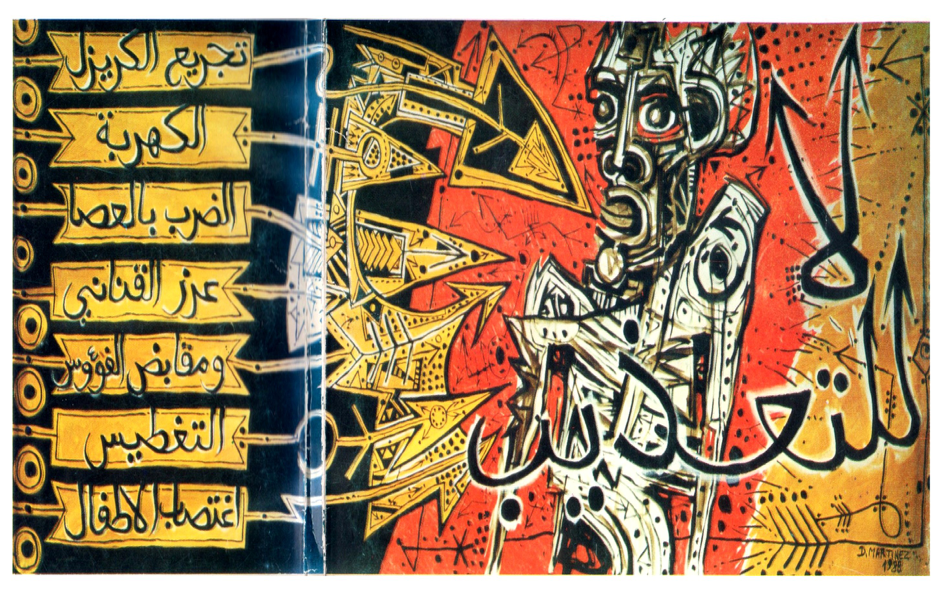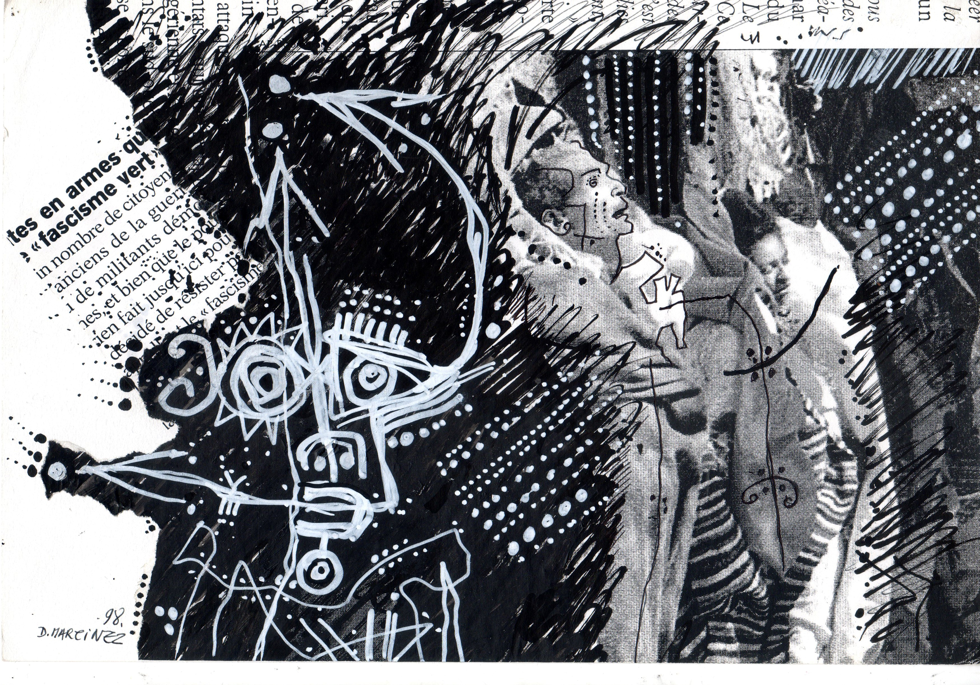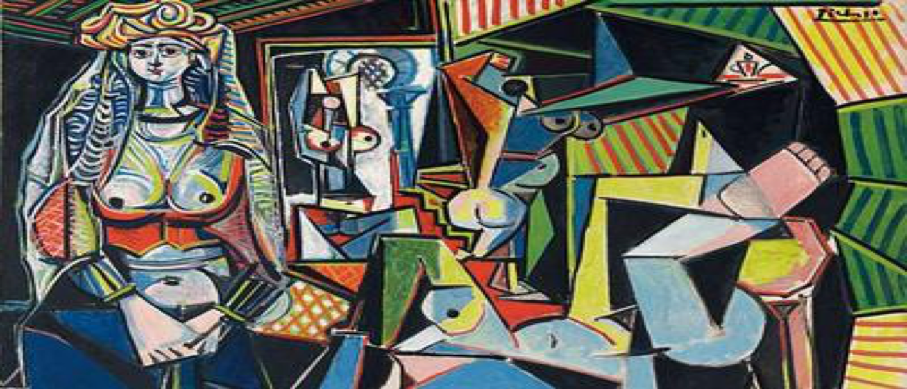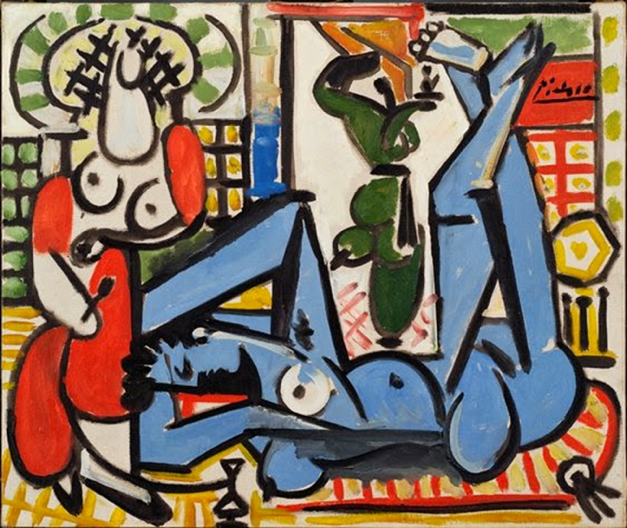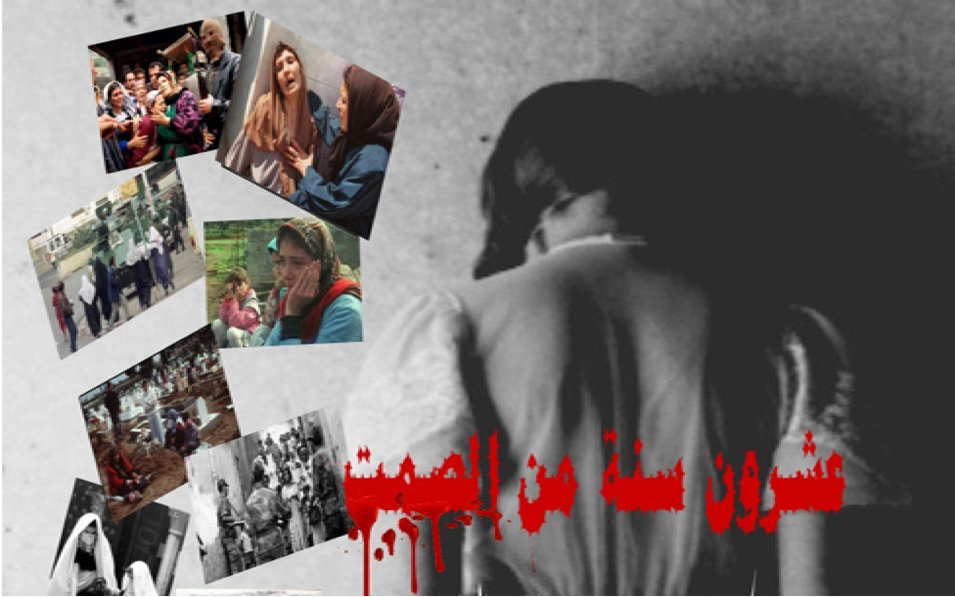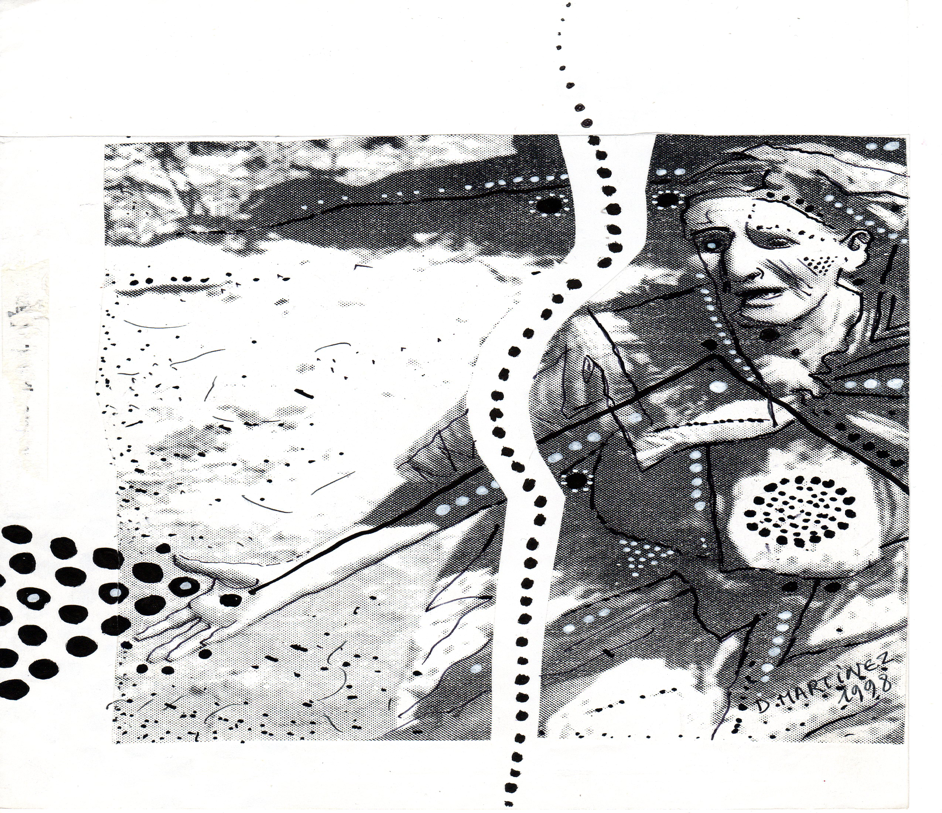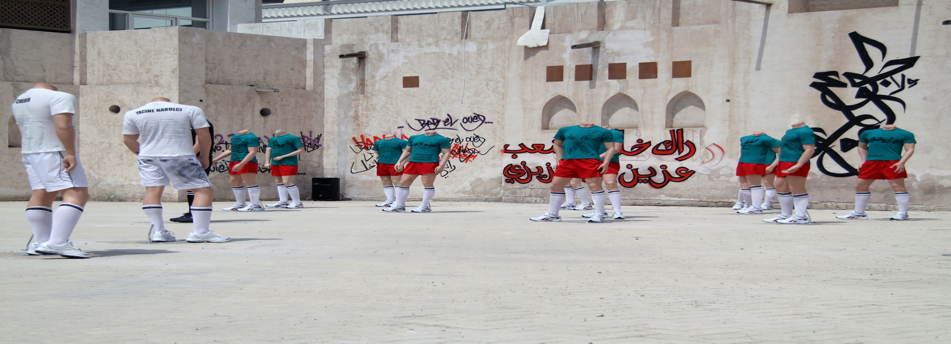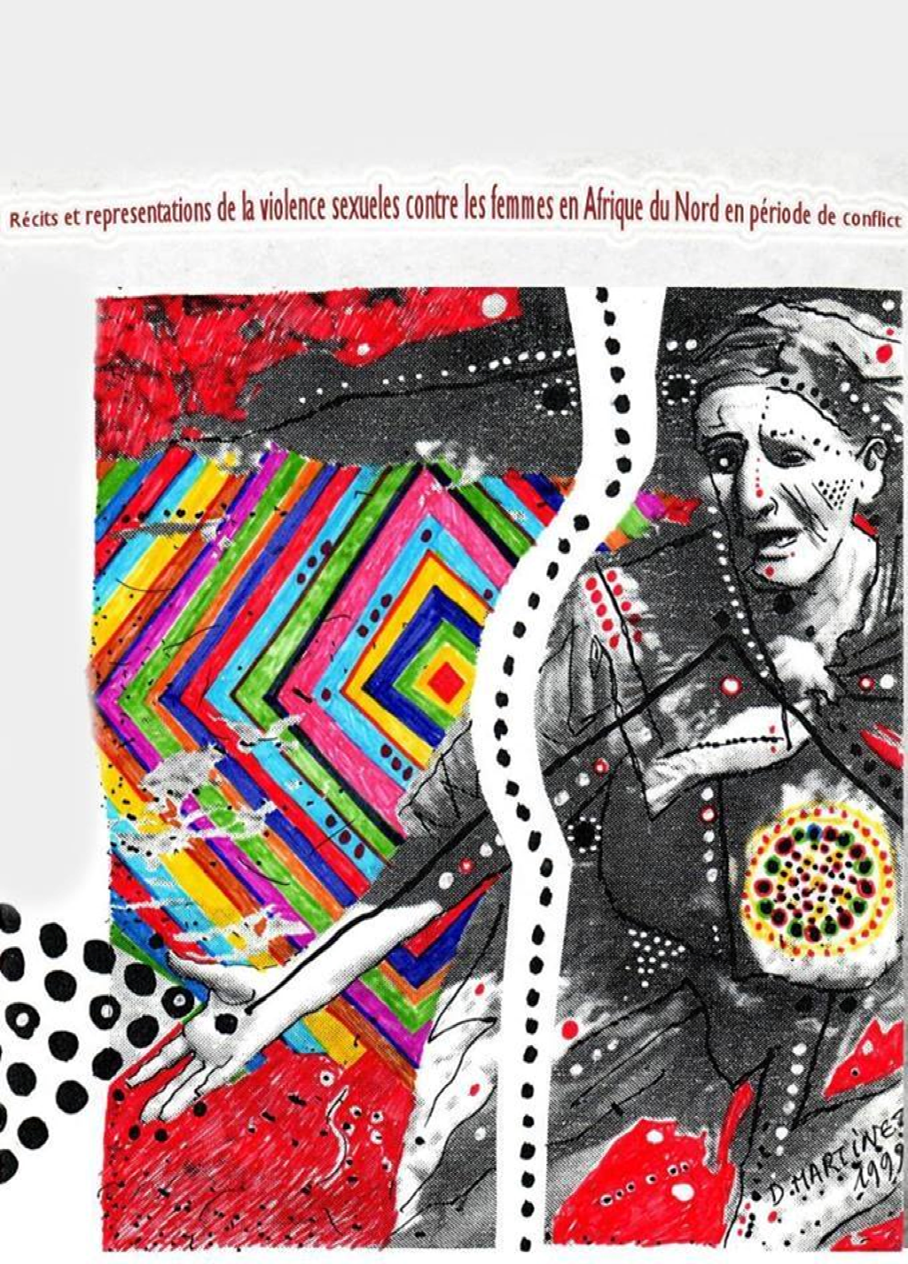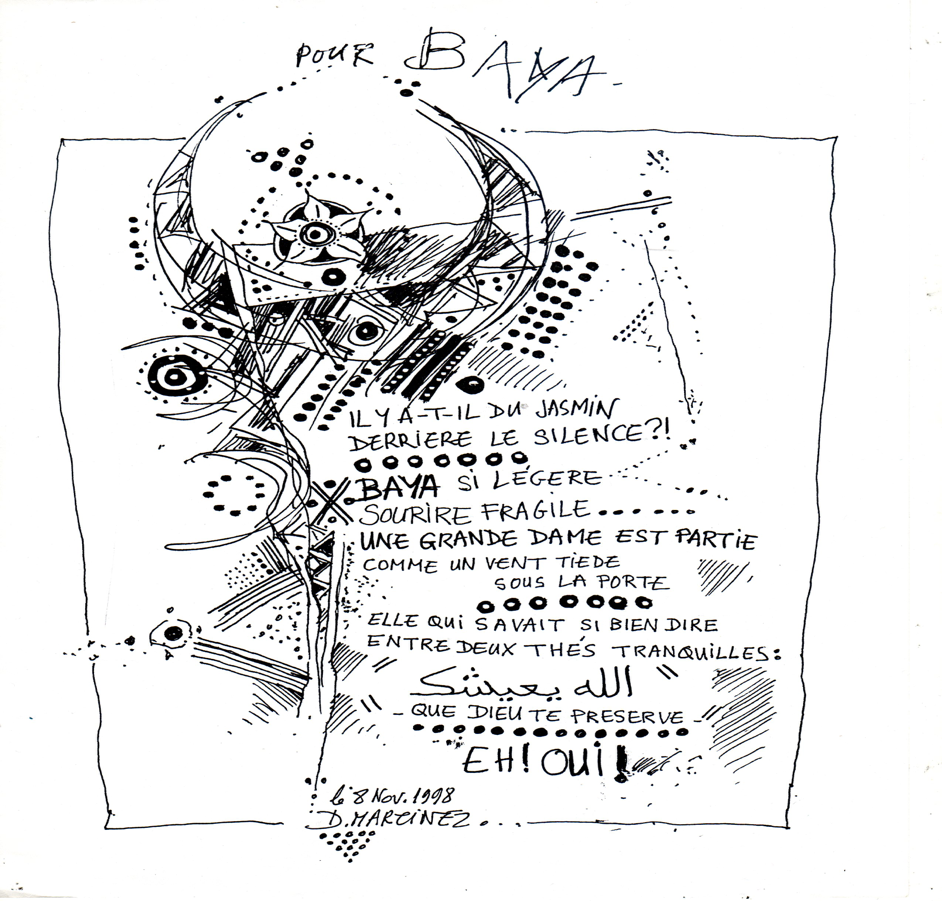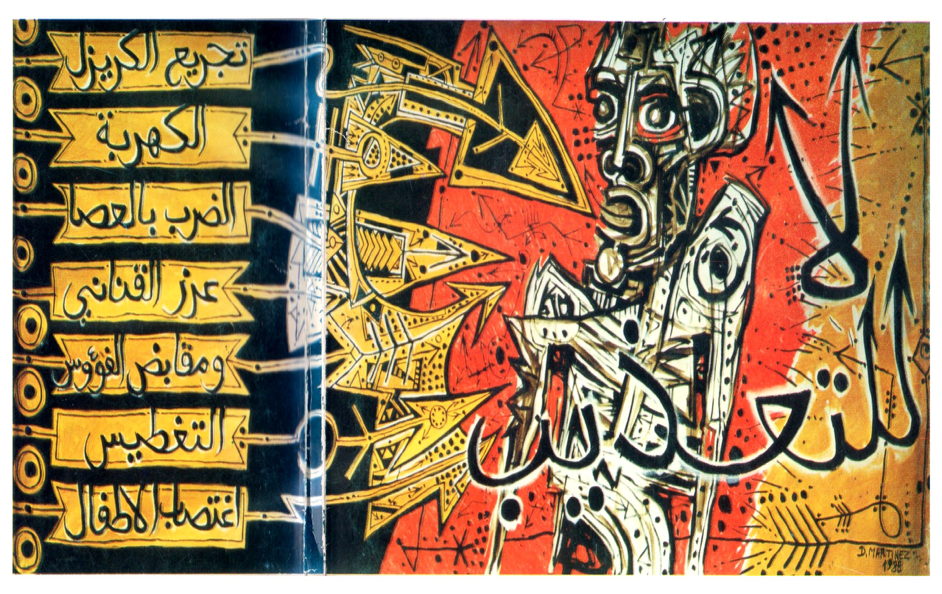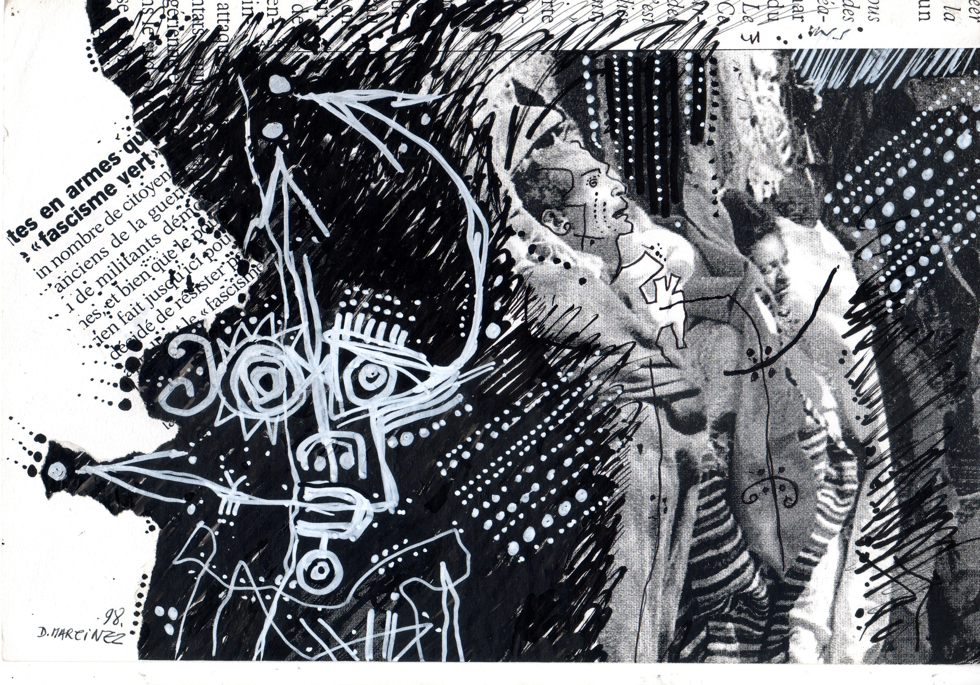Amel Grami
Women in Tunisia, Egypt, Yemen, Libya and other counties of the region played active roles in the uprisings claiming their social and political rights. They formulated their demands using modern terms based on human rights concepts of justice, freedom, equality and democracy, but the aftermath of revolutionary activity brought about changes that ran against the ideals and visions of the original change-seeking forces. In 2013, among the impacts of the ‘wind of change’, media reported that the number of Tunisian women travelling to Syria increased. Those women wanted to support Islamist fighters emotionally and physically by offering sexual services to the fighters, or what has become known as ‘Jihad al-nikah’, or sex jihad.
‘Jihad al-nikah’ has been a very controversial issue in Tunisia. Some members of the Islamist party En-nahda have denied it entirely. They maintain that the Syrian regime and local counter revolution forces created this propaganda against Syrian opposition and the Troika government. Others argued that a few groups of young women have been either under religious indoctrination or misled. They were in fact victims of ignorance. However, official statements of the ministry of interior declared that groups of young Tunisian women travelled to Syria with the purpose of Jihad al-nikah. At the same time some journalists succeeded to do report on specific cases emphasizing the complexity of the issue. TV reports and newspaper articles reported now and then the concerns of families whose young daughters were reported having joined jihadists in Syria. The purpose of this article is to define the meaning of Jihad al-nikah and analyze its different narratives in Tunisia: the official one, and the one summed up in the media reports as well as a third one related to the testimonies of the families of victims.
Keywords: Jihad, women, sexuality, ideology,
I. What is Jihad al-nikah?
a) Definition of Nikah
Muslims are familiar with the term Nikah/marriage. Aisha the spouse of the prophet Mohammed described many forms of Nikah spread in the region before the rise of Islam.[1] Later on many historical and religious texts reported the controversy around ‘Nikah Al Mut”a’)Temporary Marriage, which would last a few hours, days, weeks, or months depending on the agreement). Sunni Ulema agree that mut’a was permitted by the Prophet at certain points during his lifetime, but they confirm that he later banned it. The Shi’I, however, maintain that the Prophet did not prohibit temporary marriage, and they mention numerous hadith (saying of the Prophet) from Sunni as well as Shi’i sources to prove this. The following passage in Sahih Muslim says that Muslims were practicing Mut’a well beyond the lifetime of the prophet Muhammad:
Ibn Uraij reported: ‘Ati’ reported that Jabir b. Abdullah came to perform ‘Umra, and we came to his abode, and the people asked him about different things, and then they made a mention of temporary marriage, where upon he said: Yes, we had been benefiting ourselves by this temporary marriage during the lifetime of the Holy Prophet and during the time of Abu Bakr and ‘Umar. (Sahih Muslim 3248)
There are even arguments that it was Omar,(the third Caliphate) rather than the Prophet Muhammad, who outlawed Mut’a:
Abu Nadra reported: While I was in the company of Jabir b. Abdullah, a person came to him and said that Ibn ‘Abbas and Ibn Zubair differed on the two types of Mut’a (Tamattu’ of Hajj 1846 and Tamattu’ with women), whereupon Jabir said: We used to do these two during the lifetime of Allah’s Messenger. Umar then forbade us to do them, and so we did not revert to them.(Sahih Muslim 3250)
Having established its legality, Shi’i Ulema devoted tremendous attention to define the legal status of temporary marriage and all the rules and regulations related to it.Meanwhile, the temporary marriage remains a controversial topic showing the divide between different Islamic ideologies and both schools of thought (Sunni and Shi’i). We should stress that the debate on temporary marriage highlights the status of women in patriarchal societies and reflects how the Ulema have defended male interests. By protecting social structure and regulating sexual relationships, the Ulema confirm their right to control women ‘s bodies.
In contemporary history, new forms of marriage contracted for sexual purposes emerged such as ‘Nikah ‘urfi’ (marriage contract or customary marriage) or ‘Nikah Misyar’ (traveler’s ambulant or visiting marriage), conducted during the summer vacation by older men from wealthy Gulf States with young girls from poorer families in countries such as Egypt, Morocco, India and Indonesia…. or ‘friend marriage’. These new forms of marriage have been reported as commonly practiced in countries such as Saudi Arabia, Egypt and Yemen, and recently in Tunisia after the revolution because they attracted both men and women for many reasons. For young people, ‘Urfi marriage’ (customary marriage) is considered as a means of making sexual relations permissible and legitimate. Such unregistered “Islamic marriages” are usually kept hidden from the couple’s families and are only known to a small circle of friends.
Although temporary marriage does not oblige man to cohabit with and provide accommodation and maintenance to his wife, many young women believe that temporary marriage is a solution to their everyday problem. Young people seek to satisfy their sexual needs but they are not able to conclude a permanent marriage because of longer periods of study mainly in the West or for economic reasons. In this case temporary marriage allows youth to live their sexuality. Moreover, religious authorities in different countries legitimize the practice. In 1990 former Iranian president Hashemi Rafsanjani recognized women’s sexual desire and argued that it is legitimate for women to take the initiative in concluding temporary marriages. Similarly in 2006, the Saudi Arabian Fiqh Council ruled that “misyar marriages” and the so-called ‘friend marriages’ were licit.
However, many women activists and feminists in the Islamic world see such marriages as instruments to regulate male sexuality. By consenting to contract this type of marriage, women lose their rights. Although a man needs to pay a dower to his wife, he is not obliged to pay maintenance and the partners do not inherit each other. In that sense, the practice is not only a relic of the past, but also a threat to the family and to women in particular. Some even argue that it is an institution that encourages prostitution. Feminists also argue that such practices confirm that men are mostly sexual subjects and women are mostly sexual objects.
b) Jihad
Jihad is often translated as “holy war.” The Ulema distinguish between two forms of jihad:
- Peaceful jihad :it can refer to internal as well as external efforts to be a good Muslim or believer, as well as working to inform people about the faith of Islam. In this sense Jihad is the struggle to do good on earth for the sake of God.
- qital, which means fighting. It is known that Islam allows the use of force,military jihad in case of war.It is part of defending the Islamic faith against belligerent others, but there are strict rules of engagement. Innocents or vulnerable people such as women, children, people with disabilities and the elderly must never be harmed. Many scholars reported that the Prophet Mohammed told his followers returning from a military campaign: “This day we have returned from the minor jihad to the major jihad,” which meant returning from armed battle to the peaceful battle for self-control and betterment.
We should bear in mind that the meanings of jihad diversified in the course of recent decades[2]. Radical groups such as “Salafia Jihadiyya” (Jihadist Salafism), in particular, succeeded to resurrect jihad as an essential component of religious duty. According to them, jihad is the only alternative for Muslims in order to build and maintain the Islamic State.In this sense, jihad is a struggle not only for the triumph of faith but also to get power. Since the war in Afghanistan, Iraq and recently in Syria, the call to jihad attracted thousands of volunteers from the Islamic world, many Muslims form different parts of the occidental world also joined the cause. It is conceived as an act of liberation throughout the globe requiring the dutiful contribution of all Muslims.
c) Jihad al-nikah
If we look at the definition and significance of the term Jihad al-nikah, we find that it has no roots or origins in the history of Islam or its literature. Entries provided by a large number of people interested in this topic in Wikipedia for instance often translated as Sex jihad or Sexual jihad (pleasure marriage). It is a controversial concept that refers to Sunni women allegedly offering themselves in sexual comfort roles to fighters for the establishment of Islamic rule.[3]
It is important to emphasize that the practice of Jihad al-nikah is based on the fatwa, (religious jurisprudential opinions) issued around 2012 and attributed to a Saudi Wahhabi cleric: Sheikh Mohamad al-Arife . He asked Sunni women to offer themselves as comfort women “to boost the morale of fighters” in Syria. The religious argument presented is that “the Law of necessity allows forbidden things in exceptional circumstances”. Despite the fact that Sheikh Mohamad al-Arife denied that he is the author of this fatwa, the impact of this religious opinion was important.
Issuing such a fatwa is in fact not surprising. It is important to remind that fatwas issued during the last decade about women reflected the growing power and influence of religious men and their misogyny. Also, the body texts of fatwas explain how religion can be used to justify all the practices aimed at establishing a new gender order and imposing new relationships. In this case violence gender-based becomes more and more tolerated and legitimized by such religious discourses.
Looking at the current situation in Syria, the jihad action has just consolidated the inherited pattern if male domination. In this new battlefront, men that have been swarming from every corner of the world have bene motivated by an archetypal male image and role of rough fighters, engaged in a form of heroic self-sacrifice while women are sought to attend to their daily needs including becoming sex slaves. But what is this role attributed to women in time of jihad?
Historically speaking, classical authorities did not allow women to fight except in the most extraordinary circumstances yet did not expressly forbid that. According to the classical interpretation, women are not permitted to fight in jihad, but were told that their jihad was a righteous pilgrimage to Mecca (hajj). The duty of a Muslim woman, they argue, is to obey her husband and take care of her family. In addition, Shii scholars consider that the jihad of women is in enduring suffering at the hands of her husband and his jealousy.
Despite the will of historians to marginalize the role played by women in the public sphere, Muslim feminists involved in writing the history of women like ‘Aliyya Mustafa Mubarak in her collection “Sahabiyyat Mujahidat” succeeded to gather more than 67 names of women who participated in battles in a supporting role, usually by accompanying the fighters, encouraging the men, or by providing medical care and assistance. They are recognized as role model and admired by Muslims and they never offer their bodies to fighters.
What can we conclude from the historical background?
- Controlling the self is the moral duty of each Muslim, and this contradicts with the new link or connection between the action of jihad and sexuality.
- The community should protect women since they are seen as vulnerable. Because women are weak they should be under the control of both the family and the community.
- Performing the jihad is a gendered action. Man’s jihad is to sacrifice his wealth and his blood until he is killed in the path of Allah, but the jihad of the woman is to help her husband and her community. This vision maintains the established cultural dichotomies: men/public space, woman/private space, Woman /life, man /death.
- Misogynic literature highlights why men want to keep women away from the battlefield. For the male fighter, the Houris (women of paradise) were a major attractant. On the contrary women on earth represent a tie that relatesthem to this world, whereas the whole focus of the fighter is supposed to be on the day after and the better world.
- Reading the historical texts, particularly the jihad literature, confirms that this is not the first time that the concept of jihad is hijacked by political and religious groups over the ages in a bid to justify various forms of violence. In most cases, Islamic splinter groups invoked jihad to fight against the established Islamic order. Some reformist scholars, however, see this as an abusive interpretation of jihad that contradicts Islamic percepts.
- In one of his first political speeches about the development of the country, Bourguiba pointed out that the real meaning of Jihad is struggling in everyday life in order to change social conditions and contribute to progress and development. Bearing in mind this aim, the jihad of women would therefore be against poverty and illiteracy. Nobody would imagine that 50 years after of the promulgation of the Code of Personal Status(1956), a group of Tunisian women would travel to a battlefield to serve as sexual slaves to fighters dreaming of a dark past. Is it due to lack of religious knowledge or is it a quest for new identity?
II. Different narrations, different interpretations
a) The official narrative
Allegations of this practice of jihad al-Nikah is related to the Tunisian government’s war effort against Al Qaida-linked Islamic terrorism in the mountainous Jebel Ech (center west of Tunisia bordering Algeria). The Tunisian coalition government”Troika” alleges that the practice began with Tunisian girls who showed sympathy to the Islamic jihad movement there, and then spread with Tunisian girls volunteering to join the Syrian jihadists.[4]
It was on 19 September 2013 that the veracity of the alleged practice became the subject of heated debate in September 2013 after the Interior Minister made a public statement about Tunisian young women joining Syrian fighters. He stated in the National Constituent Assembly that a group of Tunisian women traveling to Syria for sex jihad were having sex with 20, 30 and even up to 100 rebels, and that some of the women had returned home pregnant. On 6October 2013, a Tunisian official downplayed this prior claim, affirming that the number of these young women who traveled to Syria did not exceed15, and that some were reported to have been forced to have sex with several Islamist militants.[5]This has been widely the consequence of the Arab Spring and the transition marked by the overt emergence of radicalism and active networks for recruitment of jihadists to join the Syrian opposition initially and ISIS front later, as well as trafficking in women.
b) Stories of Mujahidat Al-nikah and testimonies reported on the Media:
On 30 May 2013 ‘Tounesna’, a private Tunisian TV Channel,invited a Tunisian girl to tell her story on the program ا(وعليها الكلام امرا), a TV program that invites women for their positive reputations. She confessed being deceived to go to Syria under the name of Jihad al-nikah to marry the terrorists in a bid to support them in their fight against the Syrian government forces. Twenty-year old Aisha said she had met a woman who had been involved in luring girls at universities to recruit them for Jihad al-nikah in Syria. There is even a process of temptation as there is a promise that the fallen ones will be “martyrs holding up the banner of Islam”. Aisha was among a group of 14 girls who had been deceived to get married as Jihad al-Nikah in Syria. But Aisha’s father found out about her intention and convinced her not to go Syria by asking all their relatives to make her understand about Islam’s strong opposition to such moves.[6]
On 23-7-2014, The Tunisian Jihadist Abu Qusay was interviewed by Tunisian TV in the programلاباس (Are you Ok?), after his return from Syria. He confirmed that stories about “Jihad al-Nikah” were true.[7]At the same time Interviews of worried parents and statements by Anis Koubaji, president of the Association of Assistance to Tunisian Expatriates (l’association d’aide aux tunisiens à l’étranger) were published on the Internet highlighting the recruitment of women, the role played by some charity associations to facilitate the departure of Tunisians to Syria and the reasons behind the will to support Syrian fighters.[8]
Tunisian newspapers also reported that a young Tunisian man divorced his wife, and that they both headed to Syria almost a month ago to ‘allow her to engage in sexual jihad with the jihadists there. Another video widely circulated on the Internet and social websites in Tunisia shows the parents of a veiled girl called Rahmah, 17 years old. They said Rahma had disappeared from home one morning and they ‘later learned that she had headed to Syria to carry out sexual jihad.’ The young girl has since returned to her family, who have kept her out of sight, and said that their daughter is not a religious fanatic ‘but was influenced by her fellow students who are known for their affiliation with the Salafist jihadists.’ Her parents said these fellow students may have brainwashed her and convinced her to travel to Syria ‘to support the jihadists there.’ Such stories have become more common in Tunisia and parents have become concerned about the influence charismatic Islamic leaders in other Arab countries can wield over their children.[9]It should be noted that media played an important role in the new context of terrorism in Tunisia.Many stories about women helping radical Salafists in different regions of the country by offering them their bodies highlight the support and solidarity of some groups with those Salafists. However, stories related by the media often reported victims and no woman convinced of jihad al Nikah was among the interviewed. The testimonies of young women broadcast on TV or published in newspapers or on the Internet showed their weakness and vulnerability. These girls have often been portrayed as easily manipulated, suffering from some emotional crises and lacking religious knowledge.
c) Narrating Jihad al-nikah
Narrating Jihad al-nikah in the context of polarization between Islamists and secularists in post revolution Tunisia reflects the tension,anger, accusation and mutual mistrust.On the one hand, Islamist leaders from En-nahda party deliberately denied the issue;while others argued that it is a secular propaganda. Some of En-nahda’s comments adopted the point of view of International media. On 7October 2013, the German magazine Der Spiegel reported that “sex jihad” to Syria was “an elaborate disinformation campaign by the Assad regime to distract international attention from its own crimes. Maher Nana, the president of the Human Rights Alliance for Syria reportedly said that it was pure propaganda: “Maybe the Tunisians have some evidence but I think these are just some false claims from the interior minister that might be linked to a political agenda”,[10] he commented.
Another perspective was that of democrats, or secularists, who criticized policies adopted by En-nahda during the transnational process and accused Islamist leaders and Salafist groups of creating charity associations for the purpose of arranging the travel of many Tunisian to Syria. Victims of radical Islamist parties or ideologies are constructed as people who need “our” help and protection from “others” in order to become emancipated and equal to other modern Tunisian women. The issue of Jihad al-nikah or violence against women has become a political issue. Each party tried to defend itself and at the same time to accuse the other party.
It is evident that the woman as victim of patriarchy and men’s violence is not a new issue in the public debate and popular discourse and has accompanied women’s and human rights movements for several centuries. However, this category’s content has varied, and during the last two years the category has increasingly become occupied by the figures of the Muslim woman assuming the job of the sex worker/prostitute. For this reason En-nahda party denied the existence of this “phenomena” because it was deemed harmful for Muslims in general and particularly for Islamic parties ruling the country. We should bear in mind that En-nahdha spent time and money developing a new image for itself, specifically in the West, and lobbying in order to be seen as a “moderate Islamic political party” working hard to build a new environment where people can live together.
Although the minister of religious affairs (close to Salafists and overtly preached support of jihad in Syria) declared that the ministry would control preachers encouraging youth to travel to Syria, people were worried about the official position of the government. Othman Battikh the mufti of the state said in April that 13 Tunisian girls “were fooled” into traveling to Syria to provide sex to fighters. “For jihad in Syria, they are now pushing girls to go there,” Battikh angrily protested: “What is this? This is called prostitution. It is moral educational corruption.” He was dismissed from his position a few days later.
Sheikh Fareed Elbaji, a young religious leader, told the BBC he personally knew families who had discovered that their daughters had gone to Chaambi or to Syria to offer sex in support of the militants, apparently in obedience to fatwas or religious edicts issued on the battlefields of Syria. [11]
Similarly to this confused official position, feminists and women’s rights activists did not adopt the same position. Some took this issue as a proof of the regressive policies of Islamists while others focused their work on women suffering from socio-psychological disorders. They included this group of victims in their programs to protect women victims of violence. Their statements reflect human rights views and all the strategies used to empower victims. Feminists talked about challenges that Tunisian women are facing after the revolution and criticized how a few Tunisian women have become the object of display for males in a country reputed for promoting women’s rights and giving the chance to Tunisian to be a model in the region. Obviously, the Tunisian society experienced a paradigm shift from modern values to conservative rules.
It is interesting to analyze few testimonies by some fighters who returned to Tunisia after joining the battle front in Syria. Few of them accepted to talk about their lives in the battlefield. According to them, Tunisian women are no more an exception and a model for Arab societies promoting rights and full emancipation. Tunisian women were among other women engaged in Jihad al-nikah in Syria. Moreover, some men confess that they had sexual relationship with an important number of women. There is no doubt that seeing women passive and in need of protection reinforces the strength and potency of the male fighter. If we analyze some male narratives, we see that most of them used exaggerated expressions and talk about performances. This way of reporting is a part and parcel to the discourse of becoming a hero after a long time of marginalization.
If we consider that the basic value of Militarism is “power over the other” we are not surprised to see that fighters men are defending strict division of proper masculine and feminine roles and the binary oppositions (active/passive; logical/intuitive; rational/irrational; etc.) In this sense, war is “men’s work,” while taking care of men is the duty of women. Jihadists are constructing narrow definitions of masculine and feminine characteristics and establishing rigid gender roles. By imposing their rules, jihadists defend a certain ideology, which provides a context and justification for institutionalized discrimination and violence against women. Women exist only in relation to men–as victims in need of protection, or as sexual objects deserving exploitation. As Colleen Burke argues,
Militarism needs a gender ideology as much as it needs soldiers and weapons. It needs men who accept and believe in their role as “warrior” so much that they are willing to obey orders even unto death and women who accept their “proper” role in relation to men and will sacrifice their sons to their country’s interests and exhort them to fight and submissively fulfill the sexual needs of men in the military.[12]
Although women who engage in jihad al-nikah have been considered mostly as the victims of men, which is true in some cases, we think that women have a wide variety of motivations for entering into and consenting to jihad al-nikah: the pleasure of adventure was probably a factor particularly appealing to teenagers, but it does not explain the choice of this particular activity. From the available material shared on few blogs by Salafist girls, it seems that some girls believe in an ideology and are convinced of the afterlife rewards. They refuse to be paid for their services because they want to support men in their struggle as a duty and sacrifice for Allah. Taking into account that the recruitment message on internet relies not primarily on complex theological arguments, but on simple, visceral appeals to people’s sense of solidarity and altruism, we can argue that young women believe that their duty is to help fighters. Moreover, if we know that one meaning of the verb in Arabic ‘nakaha’.( نكح المرأة اعتمد عليها )is being supported by woman, we can understand the argument presented by some young women.The material Jihadists are using internet to construct a pan-Islamic identity discourse emphasizing the unity of the Muslim nation and focusing on outside threats. Like many other identity discourses, what appears from the jihadist body of writings is a victim narrative that highlighted cases of Muslims suffering around the world. Considering Jihad al Nikah as an attempt to develop a parallel society based on what they believe to be the Sharia, young women are presenting themselves as “activists” supporting the Islamic State project rather than representing themselves in the position of passive victims.
Obliviously, the different narratives/testimonies of young Tunisian women, official speech of the minister of interior at the NCA (september2013), and the media covering of the issue show this distinction between two categories of women:
A first group of young women who were kidnapped, recruited or forced by their partners to go to Syria and to have sexual intercourse with fighters. They are represented as victims of radical groups as well as men willing to make money by exploiting women. Indeed, poverty, illiteracy and marginalization of some regions has contributedto this factor and can be considered as a form of sex trafficking. A second group of women convinced about the utility of playing a role in the war. They believe that offering their bodies will enable them to become Mujahidat. For this reason they use this lexicon:
أخوات الفراش» ومؤازرات و«مؤازرات الإخوان» و«مجاهدات النكاح
Also different narrations pointed that some women were volunteers. They were willing to ‘offer’ their bodies to the fighters inside and outside the country. We should stress that the practice of offering one’s self,not the body is highly recognized by the community. Scholars mentioned that many women offered themselves to the prophet Mohammed willingly, hoping that the prophet would marry them. Moreover the practice was mentioned in the Quran.
﴿وَامْرَأَةً مُّؤْمِنَةً إِن وَهَبَتْ نَفْسَهَا لِلنَّبِىِّ إِنْ أَرَادَ النَّبِىُّ أَن يَسْتَنكِحَهَا خَالِصَةً لَّكَ﴾
“And a believing woman if she offers herself to the Prophet, and the Prophet wishes to marry her — a privilege for you only,” means, `also lawful for you, O Prophet, is a believing woman if she offers herself to you, to marry her without a dowry, if you wish to do so.” (Ibn Kathir) [13]
These literal readings of the Quran verse, misunderstanding its percepts and principles or misinterpretation are not new in Islamic societies. But willing to offer one’s body to fighters (pleasure marriage) raised an important question: Who will get the pleasure?
Undoubtedly, we are witnessing a redefinition of self-identity. Female bodies in the public sphere defying police forces at the beginning of the revolution have become in the imaginary of some radical groups docile bodies. This new construction of femininity (domesticity, dependency, fragility, lack of power…)in Tunisia known as the first country in the Arab world to implement women’s right and to ban polygamy highlights the ability of radicals to brainwash women and illuminates at the same time the crises of masculinity in Arab countries in the aftermath or the revolutions. By exploiting few groups of women for their pleasure, men have perpetuated the problem of sexual objectification of women’s bodies and project their fears and hatred onto women’s flesh. The fact that Tunisian men decide to take part in the Syrian war offers an alternative form of masculinity for them. These groups (criminals, Salafists, violent jihadists…) represented an idealized image of a new Tunisian style of masculinity as muscular, violent, independent, arrogant, and victorious in the war against others.
III. Conclusion
The topic of Jihad al-nikah was an unexpected one because people were in the streets voicing their demands for political, economic and social changes but in time of war anything is possible. Indeed, the so called Arab Spring caused major shifts in Arab as well Western discourses and imaginaries of the self and the other. By accepting to assume the classical role of women, this group of Tunisian women are reinforcing patriarchy within both the private and the public spheres; also they are reinforcing the dominant position of men and the subordination of women. They reproduce the perception of public spaces as sites of masculinity, performance and practice. In this case we can understand the wave of violence against women in the transitional process. Deniz Kandiyoti (2013) defined this post-revolutionary violence against women as masculine restoration, defined as the use of manipulation and coercion against women as a result of the increased female presence in the public sphere. It is a tool men use to return to the traditional religion-based roles.[14]
In order to understand why a group of Tunisian young women are attracted by this practice of sexual jihad and how “women mujahidat or muazirat (supporters)’ perceive their bodies and constitute themselves, it is interesting to analyze some face book pages and some blogs of Salafist young women. They choose pseudonames from classical repertory like Oum Al Bara, AlKhanssa, or openly praise themselves as being “terrorist and proud of it”.The topic mostly discussed on these pages is the war against infidels: police forces called ‘Atta’rut’ (despots), and political regimes that did not establish sharia law. The Salafist young women identify themselves with Kamikaze women in Palestine(Hamas), Chechen and other places where women sacrificed themselves as part of Jihad. They want to be honoured like fighters. Some of those young women joined the terrorists in Tunisia while others are more interested in sexual activities as form of rewarding fighters. In both cases, young women are moving from ‘equal ‘roles and visibility in the public space to classical ‘gender roles’ and the harem -private space. They are confirming their alterity within inherited cultural and religiously sanctioned patterns of identity politics as subordinate and supplements to masculine roles in the great holy war to restore the past glory of Islam. Whether Jihad al-nikah is a reality or a fabrication matters little as it has become an established and accepted action. It has proven that Tunisian society accepted to open a public debate and to analyze a phenomenon that many have never expected. The most important question here is that despite the horrors experienced by those who joined the front and the broad condemnation it brought, some women from Arab as well as European countries are fascinated by this practice
Bibliography
http://www.qtafsir.com/index.php?option=com_content&task=view&id=1839&Itemid=89
http://www.tuniscope.com/article/25864/actualites/tunisie/t-t-confessions-545112
www.youtube.com/watch?v=onWv66_PrQs
http://www.tuniscope.com/article/25864/actualites/tunisie/t-t-confessions-545112
www.youtube.com/watch?v=onWv66_PrQs
http://ar.webmanagercenter.com/2013/09/25/19088/%
http://www.clarionproject.org/news/isis-issues-orders-mosul-give-over-girls-sex-jihad
[1] Arabia before Islam, http://www.al-islam.org/restatement-history-islam-and-muslims-sayyid-ali-ashgar-razwy/arabia-islam(accesed 12-2-2015) A man betroths his ward or his daughter to another man, and the latter assigns a dower (bride wealth) to her and then marries her, we have also nikah al-istibda, the man who asks his wife to have intercourse with another partner in order to get a child ….)
[2] Ben Salem Myriam, “Jihad As A Progressive Concept: The Case of The Tunisian Islamic Movement Al-Nahda”, in, La Violence Politique enTunisie, published by Association Tunisienne D ‘Etudes Politiques, Tunis, June 2013, pp53-68.
[3] http://en.wikipedia.org/wiki/Sexual_jihad,(accessed 12-2-2015)
[4] Sara Daniel, TUNISIE. La vérité sur le “djihad sexuel”
http://tempsreel.nouvelobs.com/l-enquete-de-l-obs/20131107.OBS4614/tunisie-la-verite-sur-le-djihad-sexuel.html(accessed 7-2-2015)
[5] Abid Zohra, Tunisie : Le «jihad nikah» oppose les imams au gouvernement
http://www.kapitalis.com/politique/18333-tunisie-le-jihad-nikah-oppose-les-imams-au-gouvernement.html(accessed 4-2-2015) see also
http://tunisie14.tn/article/detail/jihad-nikah-au-maximum-une-quinzaine-de-tunisiennes-sont-allees-en-syrie-selon-le-mi
[6]http://www.tuniscope.com/article/25864/actualites/tunisie/t-t-confessions-545112
3www.youtube.com/watch?v=onWv66_PrQs
http://directinfo.webmanagercenter.com/2013/09/28/video-jihad-nikah-6-tunisiennes-detenues-par-hezbollah-au-liban/
[8]1.000 Tunisiennes vouées au jihad nikah dans les camps d’Edleb en Syrie
http://www.kapitalis.com/societe/17848-1-000-tunisiennes-vouees-au-jihad-nikah-dans-les-camps-d-edleb-en-syrie.html(8-2-2015)
[9]http://www.dailymail.co.uk/news/article-2304128/Tunisian-girls-head-Syria-offer-Islamic-fighters-sexual-jihad.html
http://ar.webmanagercenter.com/2013/09/25/19088/%
[10]Avraham Rachel,Sexual Jihad is a reality in Syria,
http://www.portmir.org.uk/articles/wahhabism-s-sex-jihad.htm(accessed 9-2-2015)
[11]Tunisie : Le « jihad nikah» oppose les imams au gouvernement;
http://www.kapitalis.com/politique/18333-tunisie-le-jihad-nikah-oppose-les-imams-au-gouvernement.html
[12]Burke Colleen, Women and Militarism
http://wilpf.smilla.li/wpcontent/uploads/2012/10/Unknownyear_Women_and_Militarism.pdf (accessed 9-2-2015)
[13] http://www.qtafsir.com/index.php?option=com_content&task=view&id=1839&Itemid=89
[14] Kandiyoti, Deniz, Fear and fury: women and post-revolutionary violence
https://www.opendemocracy.net/5050/deniz-kandiyoti/fear-and-fury-women-and-post-revolutionary-violence (accessed 3-2-2015)
